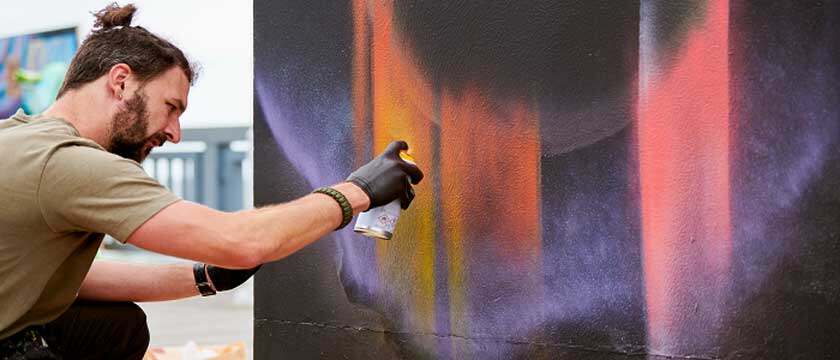Research undertaken by the University of Glasgow into artists’ earnings reveals falling incomes and significant pay disparities across demographics.


Research undertaken by the University of Glasgow into artists’ earnings reveals falling incomes and significant pay disparities across demographics.
The median income for visual artists is just £12,500 a year, a 40% decrease in earnings since 2010 (£16,000), and 47% lower than the income of full-time minimum wage workers (£23,795).
The UK Visual Artists’ Earnings and Contracts Report 2024 follows an independent study by the Centre for Regulation of the Creative Economy (CREATe), commissioned by the Design and Artists Copyright Society (DACS), of over 1200 visual artists across the UK, including photographers, painters, illustrators, sculptors, and those working in other media.
Findings also include significant disparities in pay across demographics, with women earning 40% less than men and disabled artists earning a median of just £3,750. Over 80% of respondents to the study said that their sources of earnings are unstable or very unstable.
Researchers found that whilst 48% of respondents described their visual arts practice as their only occupation, because of low pay, 51% of visual artists continue to have to supplement their income with additional work. However, even with working several jobs, artists in the UK will still only earn a median of £17,500 a year, significantly below the national minimum wage.
The report also reveals a shared concern across the visual artists interviewed regarding the unauthorised use of their work to train AI systems, which could undermine IP rights and contribute to a reduction in commissions, further impacting future earning potential.
Dr Amy Thomas and Dr Arthur Ehlinger, who led the research at CREATe, said: “In recent months, AI has been at the forefront of concerns surrounding displacement of artistic labour. However, our survey shows that there are many other factors – new and ongoing – that impact how artists get paid. It’s clear that in the UK, the fallout of the Covid-19 pandemic, coupled with Brexit, have disproportionately negatively impacted artists’ earning potential. But we also see pervasive and systematic evidence of inequality – a large gender gap, and huge earnings disparity between disabled and non-disabled artists. This has troubling implications for the sustainability and diversity of artistic professions.”
These findings support new recommendations for the Government made by DACS, alongside more than 25 other arts organisations, to help support the UK’s visual artists and arts sector.
The Visual Arts Manifesto advocates for fairer pay and improved support structures for artists. Key short-term proposals include establishing the Smart Fund to generate collective licensing revenue and appointing a Freelancer Commissioner, two policies recommended by the Culture, Media and Sport Committee in April 2024. The manifesto also calls for robust AI regulation to ensure remuneration and control for all artists, as well as financial stability and security for disabled artists.
Martin Kretschmer, Professor of Intellectual Property Law and Director of CREATe, said: “Artists are the font of the creative economy. A robust evidence base about their working conditions is critical for the health of societies. Our series of surveys capturing creators’ contracts and earnings reveal a disturbing picture about the changes in creative labour markets in the digital context. Compared to our last comprehensive survey of UK visual artists in 2010, the findings of the current survey reveal that median (typical) earnings have dropped by almost 50% to £12,500. This dramatic downward trend seems to happen across the board, from illustrators to photographers and fine artists.”
The UK’s creative industries provide around 2.46 million jobs and have an estimated GVA of £126 billion, with the arts sector contributing £49 billion. In 2023, 91% of the population engaged in the arts, and the UK Art Market, worth £9.7 billion, is one of the largest in the world.
This new report shows that artists’ earnings are at an all-time low, and the UK must find new ways of supporting artists, as outlined in the Culture, Media and Sport Select Committee’s Creator Remuneration report earlier this year.
Mercedes Leon, an Illustrator based in Leeds, said: “As a freelance illustrator, you’re often having to negotiate to get a fair rate of pay, or accept a low flat fee to secure a commission. On top of that, studio rents and material costs – the bare bones of what we need to work – keep rising. It’s becoming harder and harder for illustrators, photographers, painters – for all visual artists – to keep working and this report shows that the level of pay for the majority of us is unsustainably low. When I first moved to the UK, it’s because I felt it’d be the best place for me to work as an artist; I’m not sure if that’s true anymore.”






































